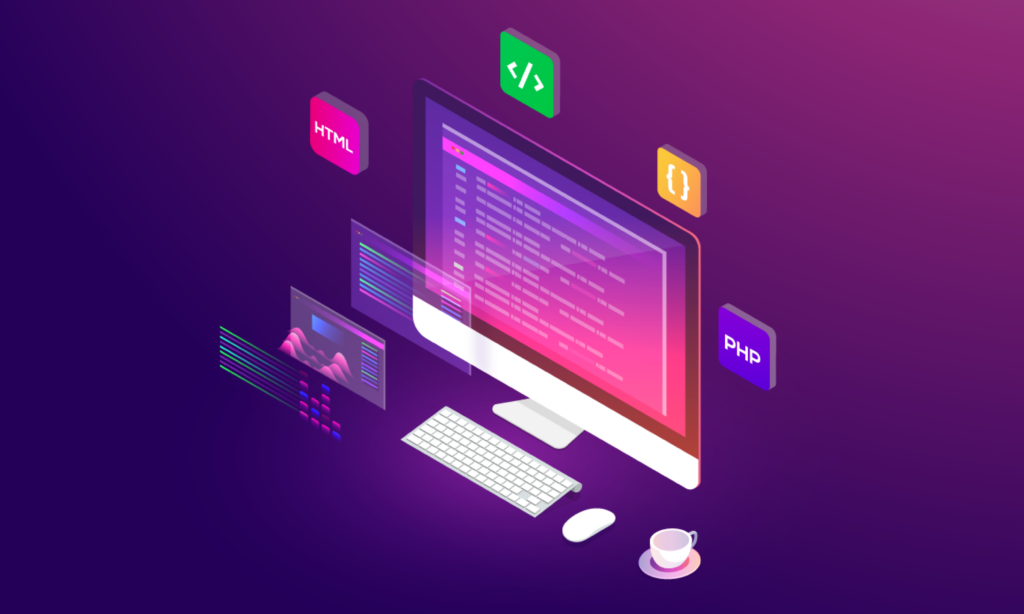Learning a new programming language can be challenging as each new topic builds upon on the previous one. Therefore, it is crucial to have a proper training plan and a comprehensive understanding of the necessary material. Fortunately, NIX experts are ready to assist you in your learning journey. In this article, we will guide you through the topics that a Java beginner should learn.
Introduction to Java – Where to Start?
First of all, you need to start with logical and set operations. Then you should dive into the language syntax and gradually move on to working with different data types. By the time you’re a Junior, you should be able to create arrays and iterate over their elements using a for loop. The next step involves understanding basic algorithms. In particular, in sorting arrays using the bubble method.
Let’s not forget about Java Core, which includes:
- working with strings and reflection;
- class loader;
- exceptional situations;
- collection;
- Set/Map;
- iterators and multithreading.
When learning Java syntax, you must master special tools. Each of them will come in handy at different stages of application development:
- Java Development Kit. It includes a compiler, debugger, monitoring system, utilities, standard class libraries, documentation, and the Java Runtime Environment.
- Java Runtime Environment. It is an execution environment with a library of Java classes and the Java Virtual Machine.
- Java Virtual Machine. An environment for executing bytecode and ensuring cross-platform compatibility of applications. The software can run on different operating systems without any problems. It is one of the advantages of Java.
Special consideration should be given to multithreading. Using all available computer resources helps to tackle complicated problems fast. Assume you have a million rows of data from an online store’s purchases. Each row has a thousand fields that must be examined. You must parallelize time-consuming calculations to complete them as rapidly as feasible (if the processor has more than one core). We launch several threads, and they process the data in parallel, which saves time.
Learning to program in Java is impossible without understanding the principles of object-oriented programming:
- Polymorphism is the ability of an object to take on various forms to effectively solve seemingly similar but technically different problems.
- Encapsulation is a mechanism that combines data and code to protect it from unauthorized interference and misuse.
- Inheritance is the process of one object inheriting the properties of another.
We have a quick tip for you on how to study Java with an emphasis on object-oriented programming. Once you have created your first application using the object-oriented programming method, take a look at how the code reflects these principles. Why is it necessary in your case? It will help you better understand the essence of Java.
Loops and Arrays in Java
- Loops are repeated actions that can be connected not only with arrays.
How does it work? Imagine a hundred identical documents that need to be stamped with the same seal. To do this, select the documents in the loop, create a single stamp function, and apply it to all documents.
- Arrays are data compiled in a single line.
Imagine a box of macaroons. You can use the loop and take all the “goodies” by one. But if you only want the third and fifth macaroons, you select them. It is the principle of the sequence number, which corresponds to the elements in the array.
Work With Databases
It is another important topic for those who want to learn Java. Databases are the foundation of any software or website. After all, they contain data about users, goods, and services. A developer should know where and how to store data, how to access it, and how to alter it while developing a service.
Html/CSS and Javascript Technologies
A Java developer should be familiar with both the back end and the front end of a website or application. It requires familiarity with HTML, CSS, and JavaScript. HTML allows you to create and display web pages in a browser. CSS styles will make your website user-friendly and aesthetically appealing. And thanks to JavaScript, you can create interactive pages.
Git, Maven, Docker
Learning to program in Java entails more than simply learning the language. It is also helpful to know how to use third-party services. Assume you’ve spent a long time researching a technology and writing code. Nevertheless, due to a power surge, your laptop died. The results of your hard work are lost. Use Git to prevent this scenario. This remote repository stores all existing versions of your project.
After writing a code, Maven makes it easier to create a project. It also simplifies reporting on the quality of the code.
Docker speeds up application launch. After creating and packaging the dependencies, launching the app requires only one command. You don’t even have to install dependencies for individual settings (for example, access to databases of all team members).
Java Frameworks and Libraries
Libraries provide ready-made solutions, while template-based frameworks simplify and speed up the creation of programs. These are reliable and proven tools. Therefore, if you want to learn Java properly, make sure to become acquainted with these libraries and frameworks:
- JUnit – code designed for automatic testing
- Hibernate – this library provides tables in the form of classes, which makes it easier to work with the database
- Spring boot is a framework for creating applications on Spring
- Apache Commons is a must-have library for Java developers.
Where Can You Find Java Study Materials?
Not sure where to start learning Java? It’s simple: start with the official documentation. It is the most reliable source of information for learning any programming language. Then, go to the Stack Overflow website and read the materials related to Java. After that, combine theory with practice and enroll in an online course. For example, on Udemy or Coursera resources. YouTube tutorials and guides will help you solve specific problems. There you can find useful tips from practicing developers. You will definitely have a lot to choose from. The main thing is to analyze new information step by step. The most important thing is to assess new knowledge gradually. If you run into an unknown error when dealing with the terminal, see the manual first.






